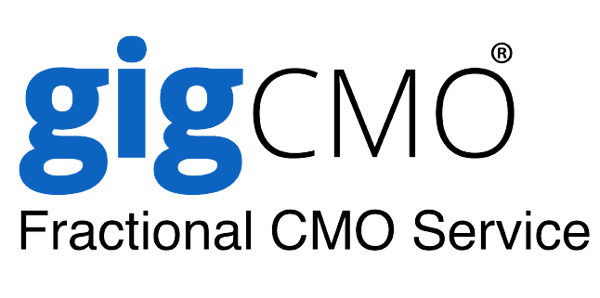A Comprehensive Guide to Building and Expanding Your Business

Explore the core elements of establishing a robust business foundation, fostering innovation, executing effective market expansion techniques, and cultivating essential marketing capabilities. Reviewing the topics we have discussed this year will give you insights to identify and implement strategies to elevate your business growth.
Understanding Businesses Challenges
Understanding and addressing these pain points effectively is pivotal for businesses seeking sustainable growth and success in their respective markets.
Market Saturation: When a market becomes overcrowded with similar products or services, it becomes challenging for businesses to stand out and attract customers.
Intense Competition: Businesses often face fierce competition from other companies striving for the same target audience or market share, making it harder to differentiate and gain a competitive edge.
Changing Customer Preferences: Adapting to customers' ever-evolving needs and wants is crucial. When consumer preferences shift, businesses must swiftly adjust their strategies to remain relevant and meet these changing demands.
Technology Advancements: Keeping up with rapidly advancing technology can be a struggle. Businesses must continually innovate and upgrade their technology to stay competitive and efficient.
Regulatory Changes: Changes in laws and regulations can significantly impact businesses, requiring them to adjust their operations, which may result in added costs or restructuring efforts.
Talent Acquisition and Retention: Finding and retaining skilled employees is a challenge many businesses face. High turnover rates or difficulty attracting the right talent can hinder growth and productivity.
Discover How You Empower Your Business at Every Stage
Building a Solid Business Foundation
Building a solid business foundation entails laying down a sturdy groundwork upon which a business can thrive and expand. This foundation comprises several key elements:
Establishing a Strong Organisational Structure: This involves creating a framework within the company that supports growth and resilience. It includes defining roles, responsibilities, and hierarchies within the organisation to ensure clarity, efficiency, and smooth workflow.
Fostering a High-Performing Team: Nurturing the skills, knowledge, and collaborative abilities of team members or incorporating technology is integral to achieving sustained success. It involves targeted training, skill-building initiatives, and creating an environment that encourages continuous learning and growth.
Streamlining Internal Processes: Enhancing the efficiency and productivity of internal operations is vital. This includes refining business model, eliminating unnecessary steps, and implementing tools or systems that facilitate smoother processes. Streamlining internal operations can significantly improve overall productivity and reduce resource waste.
Financial Stability and Risk Management: Financial management involves careful budgeting, effective resource allocation, and proactive risk mitigation strategies. Maintaining a healthy financial status and having contingency plans in place to manage potential risks ensure the business can withstand challenges and fluctuations in the market.
Embracing Innovation
Innovation is a powerful catalyst driving businesses towards unparalleled growth and relevance in today's dynamic markets. It's not merely about introducing new ideas but fundamentally transforming how a business operates and delivers value.
The Role of Innovation in Business Growth: Understanding its transformative impact involves recognising that innovation isn't a one-time event but an ongoing process. It's about fostering a culture that values creativity, problem-solving, and continuous improvement. Businesses that embrace innovation consistently outpace competitors, adapting swiftly to changing market dynamics and customer needs.
Product or Service Innovation: Creating offerings that resonate in the market is at the heart of product/service innovation. This goes beyond incremental improvements and introduces groundbreaking solutions that meet or exceed customer expectations. Innovating in products or services ensures that a business remains relevant and continues to capture the attention and loyalty of its target audience.
Process Innovation: Streamlining operations for increased effectiveness is a strategic move towards efficiency. Process innovation involves reimagining how tasks and workflows are executed within the business. It aims to eliminate bottlenecks, reduce costs, and enhance overall productivity. Businesses that innovate their processes can respond more swiftly to market demands, giving them a competitive edge.
- Prepare and plan for potential industry disruptions to steer your business towards a successful future.
- Innovate to enhance your products or services, enabling entry into new markets and boosting sales and revenue.
- Assess technical capabilities, identify strategic opportunities, and uncover AI prospects. Take the AI Adoption Self-Assessment here.
Building Marketing Capabilities
The marketing capabilities represents a structured methodology for evaluating and enhancing a company's marketing proficiency. It serves as a shared language facilitating alignment between business goals and technological advancements. This framework is instrumental in establishing the foundational aspects of people, processes, technology, and operations at a granular level.
People: The human element is pivotal in any marketing strategy. Assessing and developing the skills, expertise, and roles within the marketing team ensures a cohesive and capable workforce.
Processes: Streamlining marketing processes is essential for efficiency. Evaluating and refining workflows ensures that each stage of the marketing journey contributes seamlessly to the overall strategy.
Technology: The adoption and integration of technology play a crucial role. Examining the marketing technology stack, including tools for analytics, automation, and customer relationship management, ensures optimal support for marketing efforts.
Operations: Efficient operations underpin successful marketing campaigns. Examining and refining the operational aspects, including coordination between teams, resource allocation, and campaign execution, ensures a cohesive and effective marketing operation.
- Learn the importance of building and enhancing marketing and sales capabilities to gain a competitive edge and ultimately beat the market.
- Develop and enhance your marketing capabilities, aligning them with your growth strategy and achieving sustainable business growth.
- Rate your marketing maturity, gain insights, identify growth opportunities, and optimise resource allocation. Take the Marketing Capabilities Assessment here.
Market Expansion Strategies
Expanding your market horizons requires a strategic approach. This involves strategic initiatives to reach new audiences and explore untapped opportunities.
Assessing Opportunities for City Expansion: Before venturing into new territories, a thorough assessment of potential markets is crucial. This includes studying market trends, customer behaviour, and regulatory landscapes to identify regions that align with your business goals.
Diversification of Product or Service Offerings: Diversifying your product or service offerings is critical to capturing a broader market. This strategy involves introducing new, complementary products/services or variations catering to different market segments. Understanding diverse customer needs and preferences is central to successful diversification.
Strategic Partnerships and Collaborations: Building strategic partnerships and collaborations can exponentially increase your market reach. Teaming up with other businesses or leaders in your industry allows you to tap into their existing customer base and gain credibility. This collaborative approach can open new doors and create mutually beneficial opportunities.
- Dive into gigCMO's guide on scaling your business across North American cities to help you decide whether or not the city is ideal for your business.
- Learn the advantages and strategies of going global and an overview of the initial steps required to achieve your international business goals.
- How the Chamber of Commerce can help businesses foster relationships between business leaders in Canada and the UK.
- Ensure your deep understanding and readiness for diversifying your market presence. Take Market Readiness Assessment here.
Implementing Growth Strategies
The successful execution of growth strategies requires a systematic approach, continuous monitoring, and adaptability to navigate the dynamic business landscape.
Clarify Objectives: Clearly define the objectives tied to your growth strategies. Ensure that these objectives align with the broader business goals.
Detailed Action Plan: Develop a comprehensive action plan outlining the steps and initiatives needed to achieve your growth objectives. Assign responsibilities and set timelines for each task.
Resource Allocation: Allocate the necessary resources – human, financial, and technological – to support the implementation of your growth strategies. Adequate resourcing is vital for seamless execution.
Communication and Training: Ensure effective communication of the growth strategies to all relevant stakeholders within the organisation. Provide training and support to teams involved in the implementation process.
A/B Testing: Consider an A/B testing for your growth strategies. This allows for real-time feedback and adjustments before implementation.
Monitor and Evaluate: Establishing clear and relevant KPIs is essential to quantify the effectiveness of growth strategies. These metrics include revenue growth, customer acquisition rates, market share expansion, or return on marketing investment (ROMI).
Adaptation Based on Market Feedback: Stay attuned to market feedback and adapt your strategies accordingly. Embrace flexibility and be prepared to adjust your approach based on evolving market dynamics.
Continuous Improvement: Foster a culture of continuous improvement within the organisation. Encourage teams to share insights and learnings and use this information to refine and enhance growth strategies over time.
- Craft a winning international marketing strategy from envisioning to executing and learn the essential steps with our expert guidance.
- Adapt to the new trends and include them in long-term strategic planning to maintain a competitive edge.
- Learn how to find business experts that deliver a return on the marketing investment.
If you're looking to expand into international markets and want expert guidance to help you achieve your goals, gigCMO is the perfect partner for you. Learn more about our services and how we can help you grow your business and revenue in international markets.





